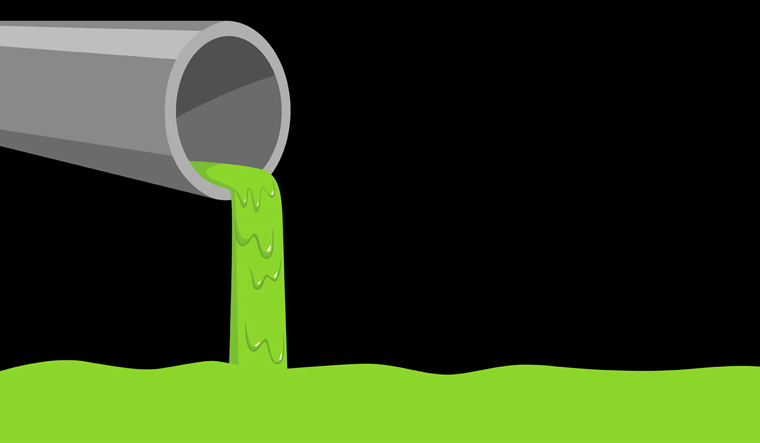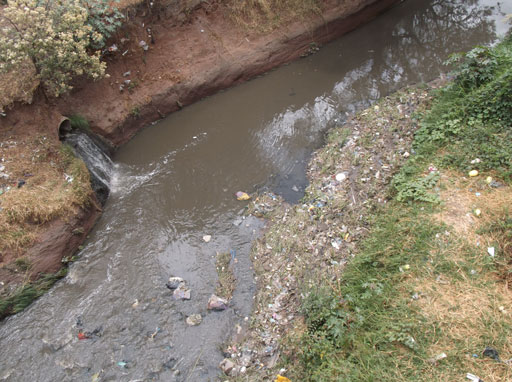Cutting-edge Industrial Wastewater Treatment Solutions: Securing the Environment
Wiki Article
Recognizing the Comprehensive Refine of Fluid Garbage Disposal: Finest Practices and Environmental Effect Factors To Consider
The administration of liquid garbage disposal is a multifaceted concern that needs a comprehensive understanding of numerous finest practices and their connected environmental influences. From the sorts of fluid waste generated to the techniques used for collection, therapy, and last disposal, each step plays an essential role in securing ecological communities and public health and wellness. As governing requirements develop and technology breakthroughs, the conversation around these procedures ends up being increasingly relevant. What ramifications do these changes hold for future sustainability initiatives, and exactly how can stakeholders make sure that they are effectively resolved?Types of Fluid Waste
Comprehending the various kinds of fluid waste is important for efficient management and disposal methods. Liquid waste can be broadly categorized into numerous types, each needing distinct handling and treatment approaches.Industrial liquid waste often contains harmful materials, consisting of heavy steels, solvents, and chemicals, generated during manufacturing procedures. These wastes necessitate stringent governing conformity to protect human health and wellness and the setting. Domestic liquid waste primarily describes wastewater created from households, including sewer and greywater, which, although less poisonous, can still pose substantial threats if improperly managed.
Agricultural fluid waste, including drainage from ranches, typically consists of plant foods and pesticides that can result in environmental deterioration otherwise treated effectively. Clinical fluid waste, created from healthcare facilities, includes polluted fluids such as physical fluids and chemicals, requiring specialized disposal methods to avoid infection and ecological contamination.
Last but not least, oil and oil waste, typically produced by dining establishments and auto sectors, can create extreme clogs in sewer systems otherwise taken care of effectively. Recognizing these categories facilitates targeted approaches for therapy, compliance with guidelines, and effective disposal methods, eventually advertising ecological sustainability and public wellness safety.

Collection Methods
Efficient collection techniques are important for the correct administration of liquid waste, ensuring that it is collected securely and efficiently before treatment or disposal. Various techniques are used depending upon the type of fluid waste generated, the quantity, and the certain qualities of the waste.One common technique is using devoted collection storage tanks or sumps, which are made to capture liquid waste at the resource. These systems commonly include pumps that promote the transfer of waste to bigger storage space containers or therapy centers. In addition, mobile collection devices equipped with vacuum technology are employed in situations where waste is generated periodically or in hard-to-reach locations.
For industrial setups, closed-loop systems can effectively decrease leaks and spills, enabling the recovery and reuse of fluid waste. It is additionally important to educate workers on correct collection protocols to minimize threats related to dangerous compounds.
Additionally, executing routine upkeep timetables for collection devices ensures optimal performance and safety and security. The assimilation of advanced tracking systems can improve collection effectiveness by offering real-time data on waste levels and possible risks. In general, efficient collection approaches are fundamental to sustainable fluid waste management techniques.
Treatment Procedures
Therapy procedures play an important function in the monitoring of fluid waste, transforming potentially unsafe materials into reusable sources or risk-free effluents - liquid waste disposal. These processes can be extensively categorized into physical, why not check here chemical, and biological methods, each customized to resolve certain pollutants present in the waste streamPhysical treatment methods, such as sedimentation and filtration, work by removing put on hold solids and particulate issue. These strategies are usually the very first action in the treatment chain, effectively lowering the load on succeeding processes. Chemical therapies involve the usage of reagents to reduce the effects of dangerous compounds, speed up heavy metals, or oxidize organic pollutants, consequently boosting the safety and security of the effluent.
Biological treatment procedures, including activated sludge systems and anaerobic food digestion, utilize on the natural capacities of bacteria to break down raw material. These techniques are specifically efficient for wastewater including biodegradable contaminants. Advanced treatment modern technologies, such as membrane filtration and progressed oxidation procedures, are increasingly used to attain greater levels of filtration.
Including a combination of these therapy methods not only guarantees conformity with regulatory requirements yet additionally promotes ecological sustainability by recuperating useful resources from fluid waste.
Disposal Options
Just how can organizations make sure the risk-free and accountable disposal of liquid waste? Efficient disposal choices are vital for securing public health and the atmosphere. The main methods include land treatment, incineration, and disposal followed by discharge into community wastewater systems.Land disposal includes the mindful containment of liquid waste in designated land fills, guaranteeing that it does not leach right into surrounding dirt or water. Incineration, on the other hand, topics fluid waste to high temperature levels, transforming it into ash and gases, which need correct purification to decrease emissions. This technique is suitable for contaminateds materials that can not be dealt with through standard methods.
In cases where liquid waste can be treated, companies may select chemical or organic therapy processes to neutralize dangerous elements before discharging the treated effluent into metropolitan systems. This course typically lines up with governing requirements, guaranteeing that the effluent satisfies safety and security standards.
Ultimately, organizations need to perform detailed analyses of each disposal alternative to determine its viability, taking into consideration elements such as waste make-up, governing conformity, and other possible threats to wellness and the environment. By picking proper disposal methods, organizations can contribute to a liable waste administration technique.
Environmental Effect
The environmental impact of liquid garbage disposal is an important consideration for companies looking for to lessen their ecological impact. Improper disposal techniques can cause significant contamination of water sources, soil degradation, and negative impacts on regional environments. For example, harmful liquids can leach right into groundwater, posturing threats to drinking water supplies and water life. Additionally, the discharge of without treatment or improperly treated waste right into surface area waters can cause eutrophication, causing oxygen depletion and the succeeding fatality of fish and other organisms.
To mitigate these influences, companies must take on ideal techniques such as implementing extensive waste treatment procedures, promoting recycling and reuse, and adhering to regulative criteria. By taking a proactive technique to fluid waste administration, entities can significantly decrease their environmental footprint while supporting lasting advancement objectives. Eventually, an extensive understanding of the environmental influences linked with liquid garbage disposal is vital for informed decision-making and liable stewardship of natural deposits.
Final Thought
Reliable management of liquid waste is important for safeguarding environmental honesty and public wellness. By embracing best methods in collection, disposal, and treatment, along with adherence to regulative requirements, the capacity for dangerous contamination of ecological communities can be substantially reduced. Continual advancements in technology and processes add to lasting waste management efforts. Ultimately, a detailed understanding of fluid waste disposal not just minimizes environmental influences yet additionally cultivates a commitment to accountable resource administration and ecological stewardship.The administration of fluid waste disposal is a diverse issue that requires an extensive understanding of various ideal methods and their connected environmental impacts. From the types of liquid waste produced to the approaches visit employed for collection, therapy, and last disposal, each step plays an important duty in safeguarding ecosystems and public health and wellness.The environmental influence of fluid waste disposal is a crucial factor to consider for companies looking for to reduce their eco-friendly footprint. Eventually, a comprehensive understanding of the environmental effects associated with fluid waste disposal is necessary for informed decision-making and accountable stewardship of natural resources.
Inevitably, a thorough understanding of liquid waste disposal not only alleviates ecological effects however also cultivates a commitment to accountable resource monitoring and ecological stewardship.
Report this wiki page